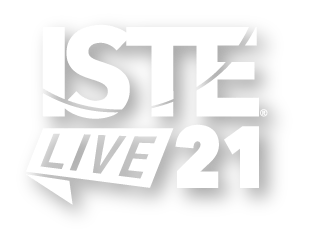

Hopping Into VR: A Relationship With Real Scientists to Explore Climate Change |
Participate and share : Poster
Ryan Whitlock Ally Audas
Virtual reality is a powerful tool for creating a deeper understanding of a setting and a personal connection to the experience. A combination of Tour Creator with scientific field researchers provides the highest level of SAMR, transforming teaching and providing experiences that would not be possible without the technology.
| Audience: | Professional developers, Teachers |
| Skill level: | Beginner |
| Attendee devices: | Devices useful |
| Attendee device specification: | Smartphone: Android, iOS, Windows |
| Participant accounts, software and other materials: | We will be bringing our own Google Expeditions Kit for the virtual tours as well as the book, and task cards for reference. |
| Topic: | Augmented, mixed & virtual reality |
| Grade level: | PK-5 |
| Subject area: | Science, Social studies |
| ISTE Standards: | For Students: Knowledge Constructor
|
Students do not always have prerequisite knowledge needed to understand setting and variables beyond their own experiences. By introducing virtual reality, students are granted access to worlds beyond the classroom. This activity allows students to take a virtual field trip on an actual scientific field study and collect their own data. We partnered with a field science lab who studies snowshoe hares and with their help, recreated a virtual experience based on the book Hopping Ahead of Climate Change. Students collect their own data as if they are in the field (virtually) and draw their own conclusions about the impact of climate change on snowshoe hares. The activities promote a hands-on experience that might not be possible if it were not virtual; making it the highest level on the SAMR model (Puentedura, 2013). Because these VR materials are becoming more popular and accessible, teachers, administrators and technology integration coaches are often seeking model lessons for how to use technology in more meaningful ways or to enrich the learning environment with content specific examples of how it can be authentically (Newmann) used in the classroom. Task Cards used for the activity with student and teacher directions will be available for download as well as the free virtual tour through Tour Creator.
Objectives:
Using the Google Expeditions viewers, participants will be able to experience a virtual field trip into the wild (created by tech specialist and scientists) to view the impact of climate change on snowshoe hares.
Participants will have access to the handouts included in the QR link showing how students should observe in the virtual environment and collect data using the data collection tool.
The virtual tour is almost complete (waiting on the winter pictures on location). Success will be continual traffic and download of the virtual tours.
Collard, Sneed (2016) Hopping Ahead of Climate Change. Bucking Horse Books.
Mainstream:
The Atlantic "Virtual Reality Gets Real
The promises—and pitfalls—of the emerging technology" http://www.theatlantic.com/magazine/archive/2015/10/virtual-reality-gets-real/403225/;
Fast Company "Could VR Make Us Better People" Time magazine VR cover story: http://time.com/tag/virtual-reality/ http://www.fastcoexist.com/3041200/could-virtual-reality-make-us-better-people
Academia:
Newmann, F. M., Marks, H. M., & Gamoran, A. (1996). Authentic pedagogy and student performance. American Journal of Education, 280-312. http://www.jstor.org/stable/1085433?seq=1#page_scan_tab_contents


Creating an Augmented Reality Travel Story
Digital Design for Any Device
Purposeful Inclusion and Support of Edtech LGBTQ+ Voices and Content Creators